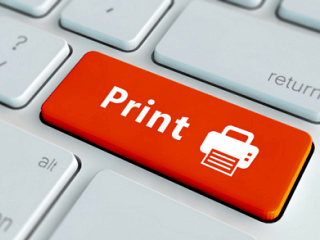Top 10 Problems Setting Up Artwork for Print

& how to overcome them
You have created a stunning piece of artwork, your customer loves it and all you need to do now is get it printed. Simple. Well it should be!
Here are the top 10 problems we encounter sending files to print and how to prevent these problems from occurring.
1) Artwork Created in the Wrong Program
Artwork created in MS Word, Excel, Publisher or Powerpoint is not set up for professional printing. Whilst these programs can convert the artwork into a PDF file these files are not necessarily suitable for printing. A PDF file is only as good as the original source file, so a PDF created in MS Word is unlikely to include correct bleed and images may not be at the required resolution. Artwork should be created in programs such as InDesign, Illustrator or Quark. If you don’t have access to such programs it may be better to outsource artwork to the printer’s studio department.
2) Incomplete or Corrupt Files
Before sending your artwork it is best to check that your file will open correctly, all the pages are there and that all images display correctly.
3) Colours in RGB not CMYK
Always make sure you convert your colours from RGB to CMYK (four colour). Left in RGB your full colour images may print in black and white or with inaccurate colours.
4) Black & White Images Left in RGB or CMYK
Black and white image need to be set as greyscale, left in RGB or CMYK they will print with some colour.
5) Images Supplied in the Wrong Format
It is best to supply images as TIFF or PSD files as these files retain all the detail within the image and the correct colours. JPGs can be used and will be satisfactory in the majority of applications but may lose a small amount of colour and detail every time they are saved.
6) Image Resolution Too Low
Images used in print need to be 300 dpi. Any smaller than this will result in a lower quality printed image and any higher will simply increase the file size and printing time. Images downloaded from the internet do not print clearly (these are usually 72 dpi).
7) Missing Images in Applications
If the image files are not included in the artwork they will either not print or a low resolution version will be printed in its place. Before sending your artwork to print check that all images are included.
8) Fonts Not Embedded or Included in Files
When creating a PDF file it is important to embed your fonts. This means that a document can be opened (and printed) by someone who does not have that specific font on their computer. When sending application files (InDesign, Quark) the fonts will need to be included so that the job can be printed correctly.
9) Inadequate Bleeds
A bleed is required to extend the print to the cut edge. If the bleed is not set up correctly it will result in white lines on the trimmed edge which will detract from the overall appeal of the print making the job look unprofessional. Most jobs require a 3mm bleed, however, vinyl binders require an 8mm bleed.
10) Not Supplying A Hard Copy Proof
Supplying a hard copy proof will enable the printer to spot any potential problems. Where possible please supply laser printouts at actual size. If the artwork has been scaled to fit the print area simply note this on the hard copy proof.
Article adapted from David Airey, See Original Article

